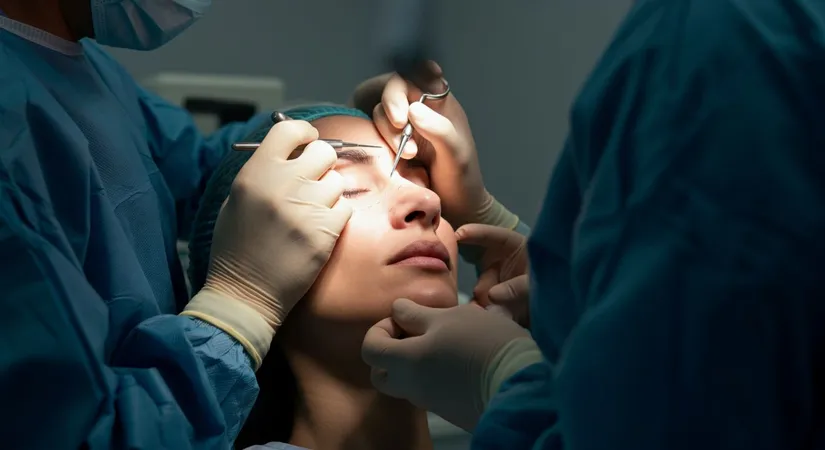Explore the transformative world of nose aesthetics and discover how to enhance your facial harmony with expert guidance.
Nose aesthetics, often referred to as rhinoplasty or nose surgery, is a transformative procedure that can significantly enhance one's facial harmony and boost self-confidence. Whether you're considering a surgical approach or exploring non-surgical options, understanding the nuances of nose aesthetics is crucial. This guide delves into the essentials of nose aesthetics, helping you make informed decisions about your appearance. From choosing the right surgeon to navigating the recovery process, and even exploring non-surgical alternatives, this comprehensive guide covers all aspects of nose aesthetics.
Nose aesthetics is a field that offers various options for those looking to enhance their nasal appearance or function. Surgical procedures like rhinoplasty provide permanent solutions by reshaping the nose's structure. This method is ideal for individuals seeking significant changes, such as correcting a deviated septum or altering the nose's size and shape. For instance, a patient with breathing difficulties due to a deviated septum might opt for rhinoplasty to improve both function and appearance.
On the other hand, non-surgical methods, such as fillers, offer temporary enhancements with minimal recovery time. These procedures are suitable for individuals looking for subtle changes without the commitment of surgery. For example, someone wanting to smooth out a nasal bump might choose fillers for a quick and effective solution. Understanding the differences between these approaches is crucial for making an informed decision.
Choosing between surgical and non-surgical nose aesthetics depends on individual goals and circumstances. For instance, someone seeking a dramatic transformation might prioritize the long-term benefits of rhinoplasty despite the longer recovery period. Conversely, a person interested in minor adjustments might prefer the convenience and lower risk of fillers.
Each step in the rhinoplasty process is crucial for achieving the desired results. During the consultation, patients can express their aesthetic goals and discuss potential outcomes with their surgeon. Preparation involves medical evaluations to ensure the patient is fit for surgery. Finally, the procedure itself is performed under anesthesia, where the surgeon meticulously reshapes the nose to meet the patient's expectations.

When considering rhinoplasty, selecting a surgeon with the right qualifications and experience is crucial. A board-certified facial plastic surgeon with a specialization in nose aesthetics ensures a high level of expertise. For example, a surgeon who has performed numerous successful rhinoplasties can provide insights into achieving natural-looking results. Additionally, reviewing a surgeon's portfolio of before-and-after photos can offer a glimpse into their aesthetic style and skill level.
These factors are essential in ensuring that the surgeon you choose can meet your aesthetic goals. For instance, a surgeon with a strong reputation in cosmetic nose reshaping is likely to have the experience needed to handle complex cases. Furthermore, patient reviews can provide valuable insights into the surgeon's bedside manner and post-operative care.
Following these steps can help you find a surgeon who aligns with your expectations. During consultations, assess how well the surgeon listens to your concerns and whether they provide personalized advice. This interaction is crucial for building trust and ensuring that the procedure aligns with your aesthetic desires.

Recovery from nose surgery, such as rhinoplasty, involves several stages, each requiring specific care. Initially, patients may experience swelling and bruising, which typically subsides within the first two weeks. During this period, keeping the head elevated can significantly reduce swelling. For example, using extra pillows while sleeping can help maintain the necessary elevation.
By the third week, most individuals notice a reduction in visible bruising, allowing them to resume light activities. However, strenuous activities should be avoided for at least six weeks to prevent complications. Understanding this timeline helps set realistic expectations and ensures a smoother recovery process.
Adhering to these tips can enhance recovery outcomes. For instance, avoiding nose blowing reduces the risk of disrupting the healing tissues, while a nutritious diet provides the body with essential nutrients for repair.
These steps are crucial for monitoring progress and addressing any concerns promptly. Regular follow-up appointments allow the surgeon to assess healing and make necessary adjustments to the recovery plan. By following these guidelines, patients can ensure a smoother and more effective recovery process.

Non-surgical nose reshaping, primarily using dermal fillers, offers a swift and minimally invasive alternative to traditional rhinoplasty. This approach is ideal for addressing minor imperfections like bumps or asymmetry without the need for surgery. For example, a person with a slight dorsal hump can achieve a smoother nasal profile through fillers. Additionally, the procedure involves minimal downtime, allowing individuals to return to their daily activities almost immediately.
These benefits make non-surgical nose reshaping an attractive option for those seeking temporary enhancements. For instance, the ability to reverse the effects if desired provides peace of mind for individuals hesitant about permanent changes.
Each step in the non-surgical nose reshaping process is crucial for achieving the desired outcome. During the consultation, patients can express their aesthetic goals and discuss potential results with their practitioner. The procedure itself is quick, often completed within an hour, and involves injecting fillers to enhance the nose's appearance. Follow-up appointments ensure satisfaction with the results and allow for any necessary adjustments.
Experience the pinnacle of luxury and wellness at Le Méridien Bodrum. Call us today for a free consultation and discover your dream residence or resort stay.
📞 Call Now for Your Free Consultation